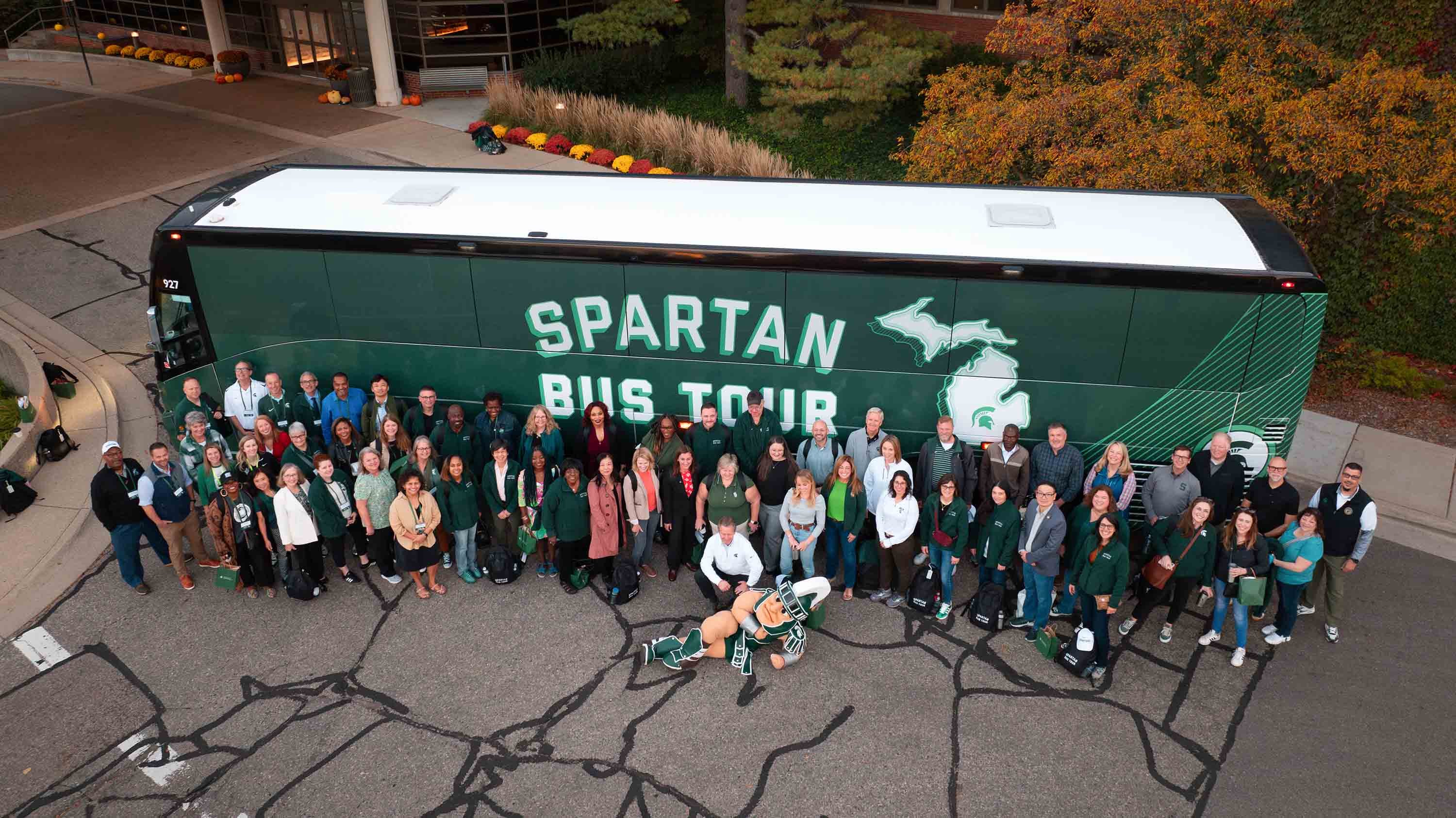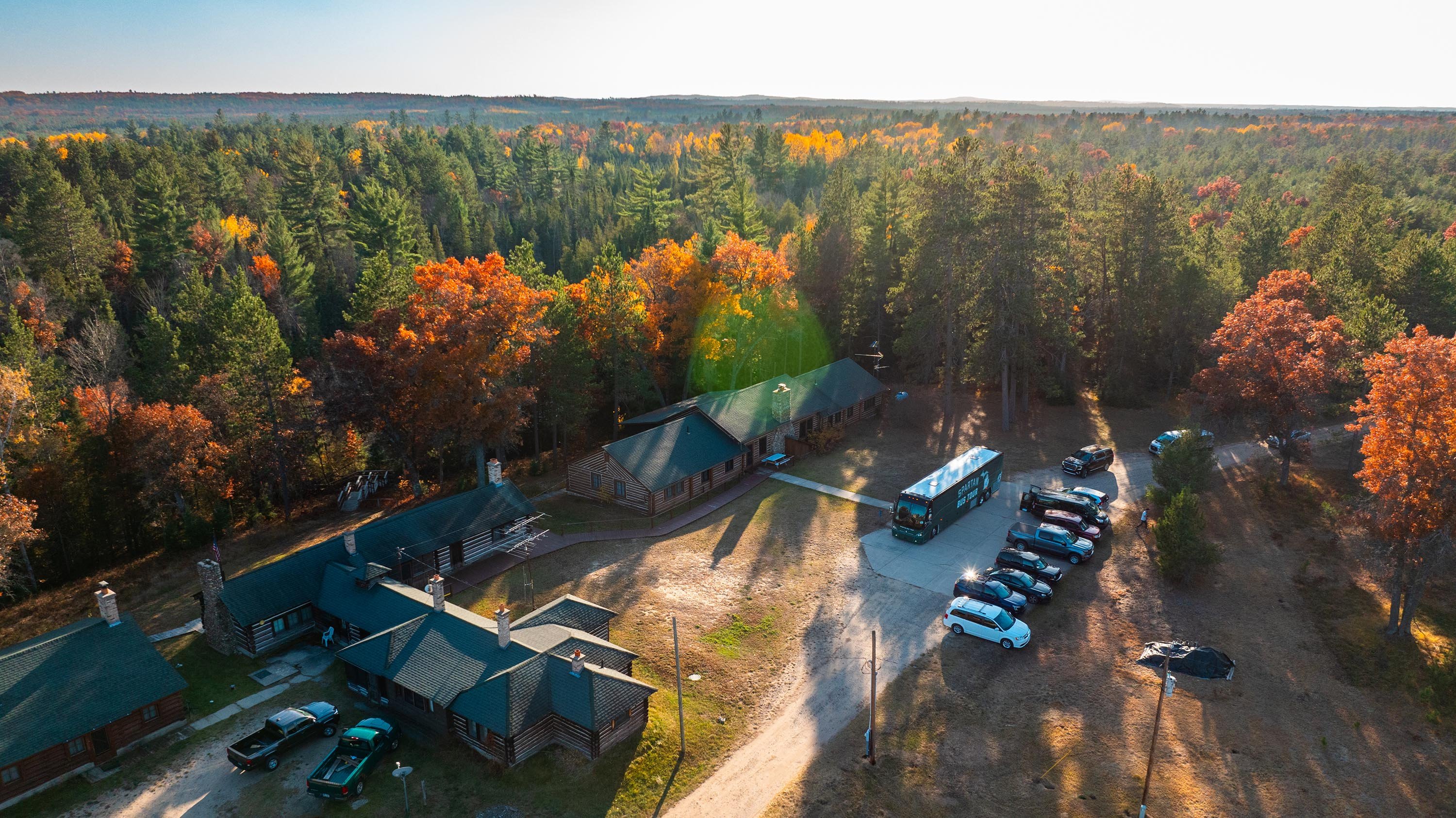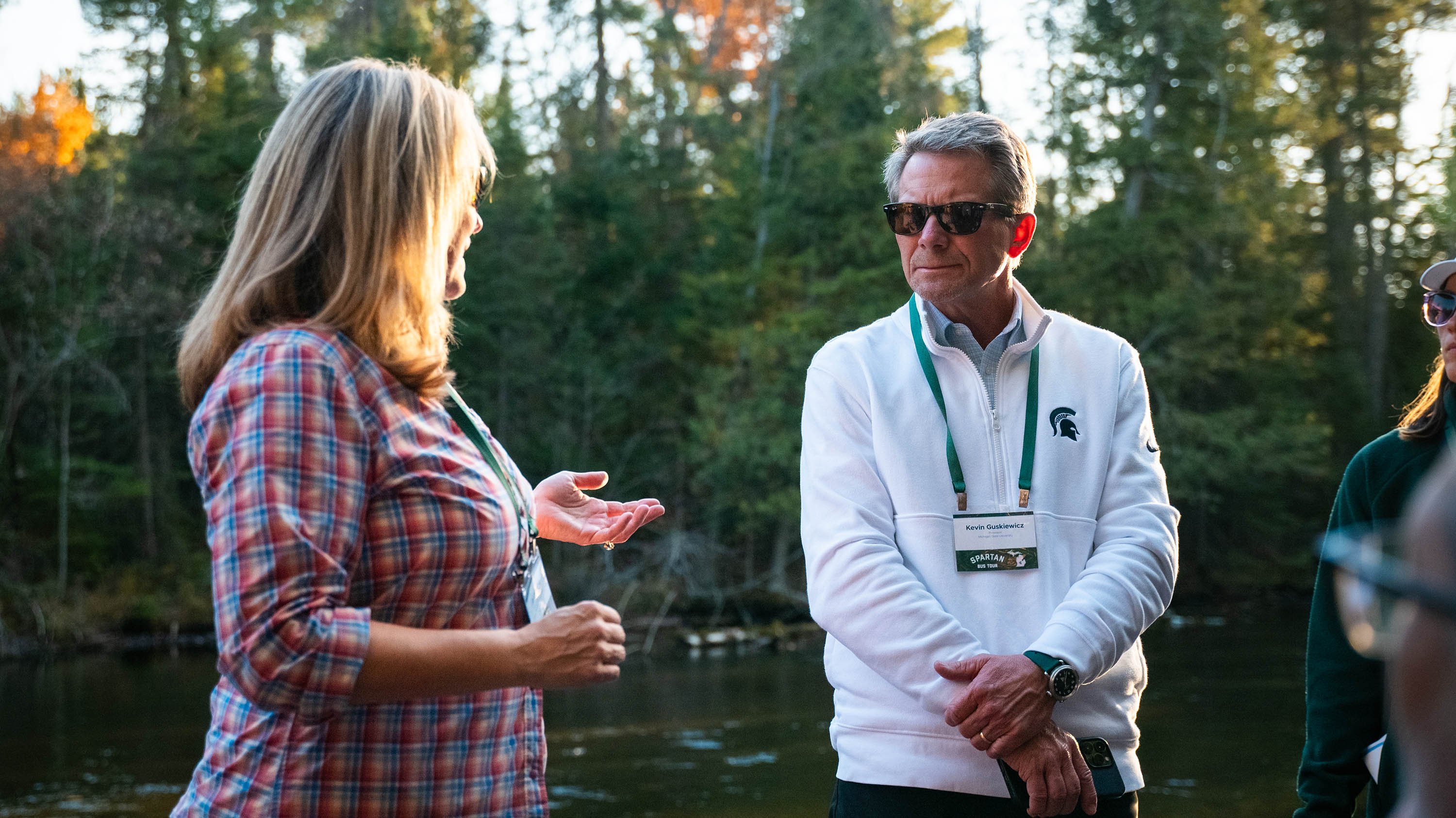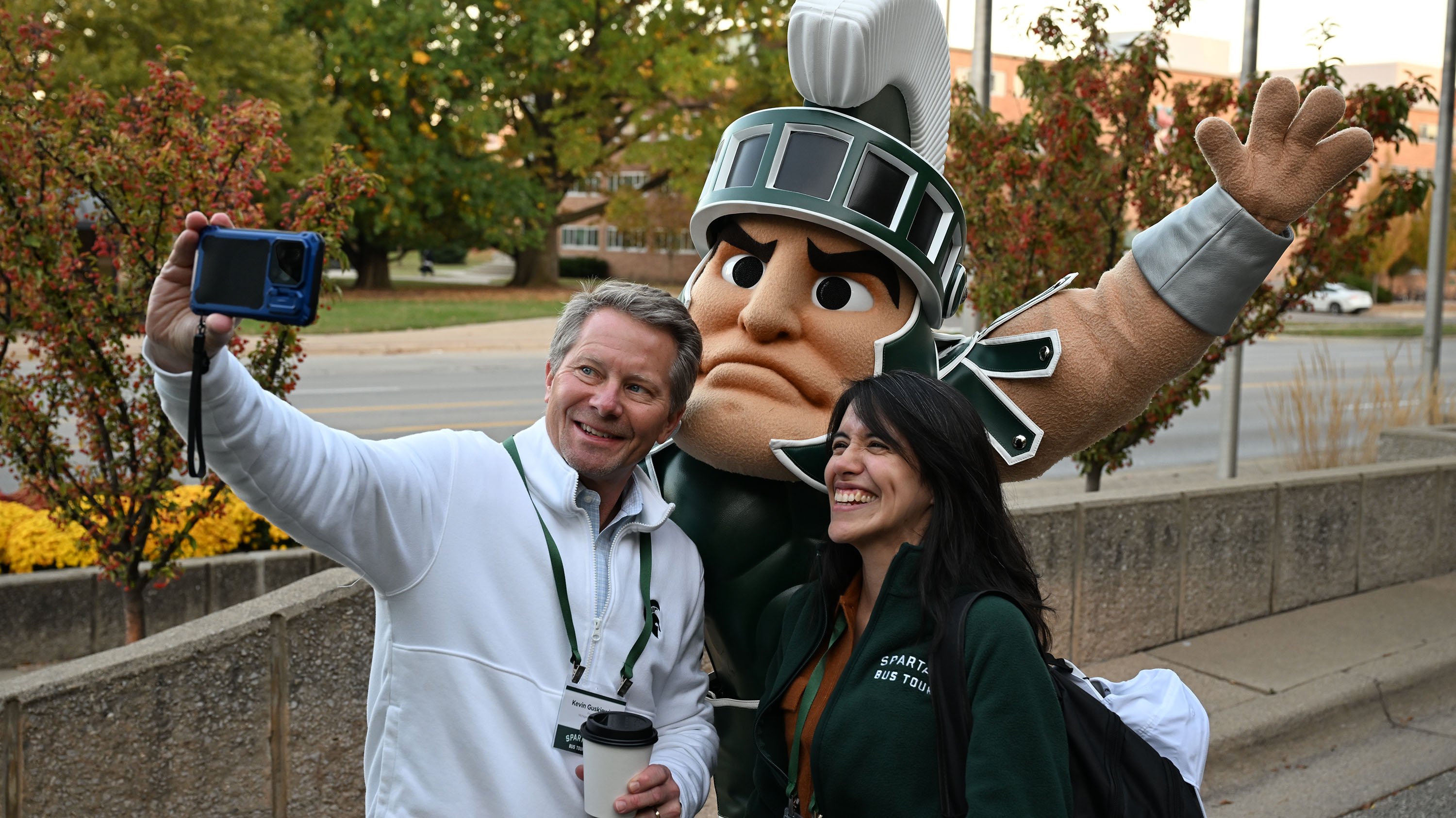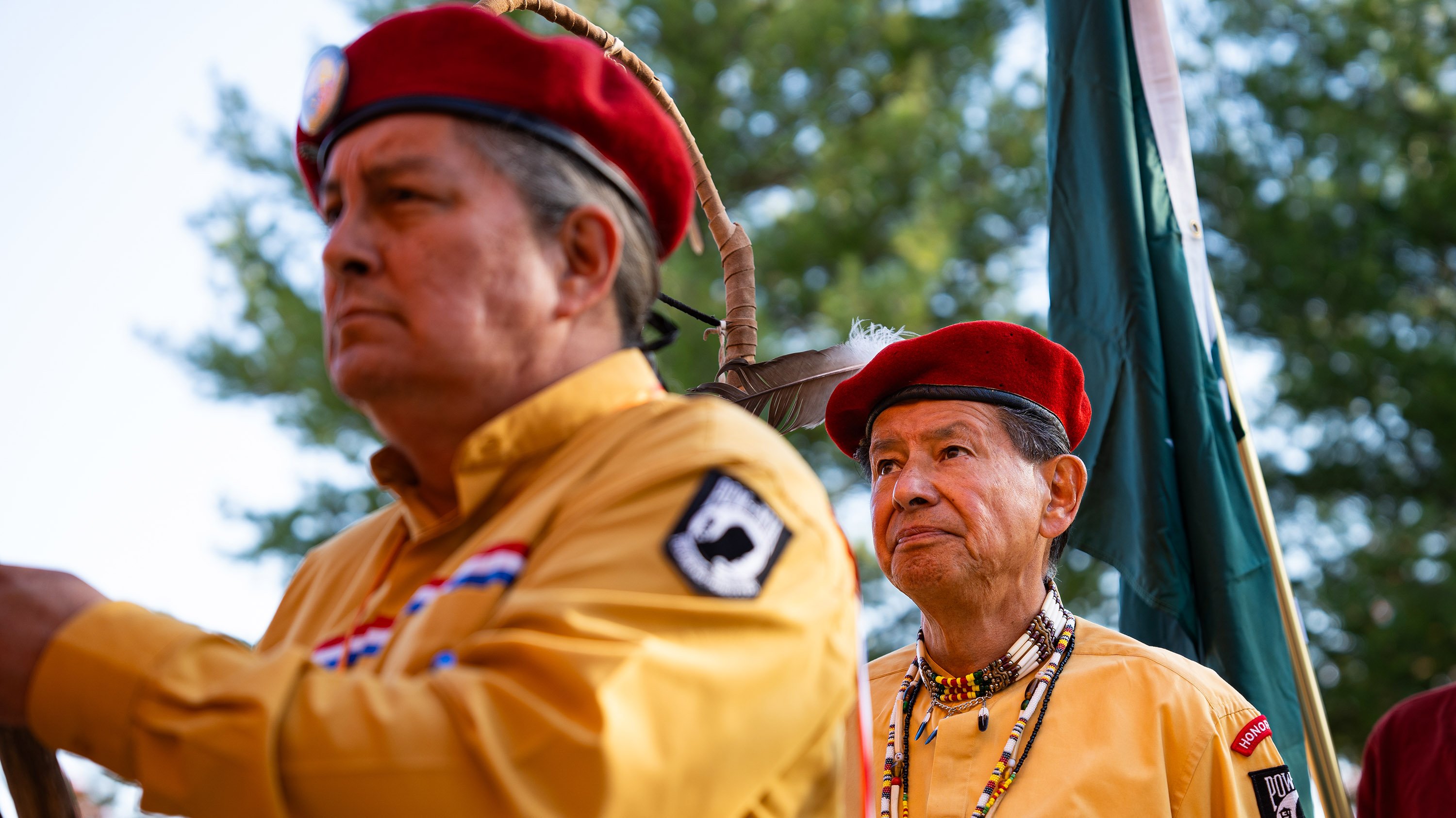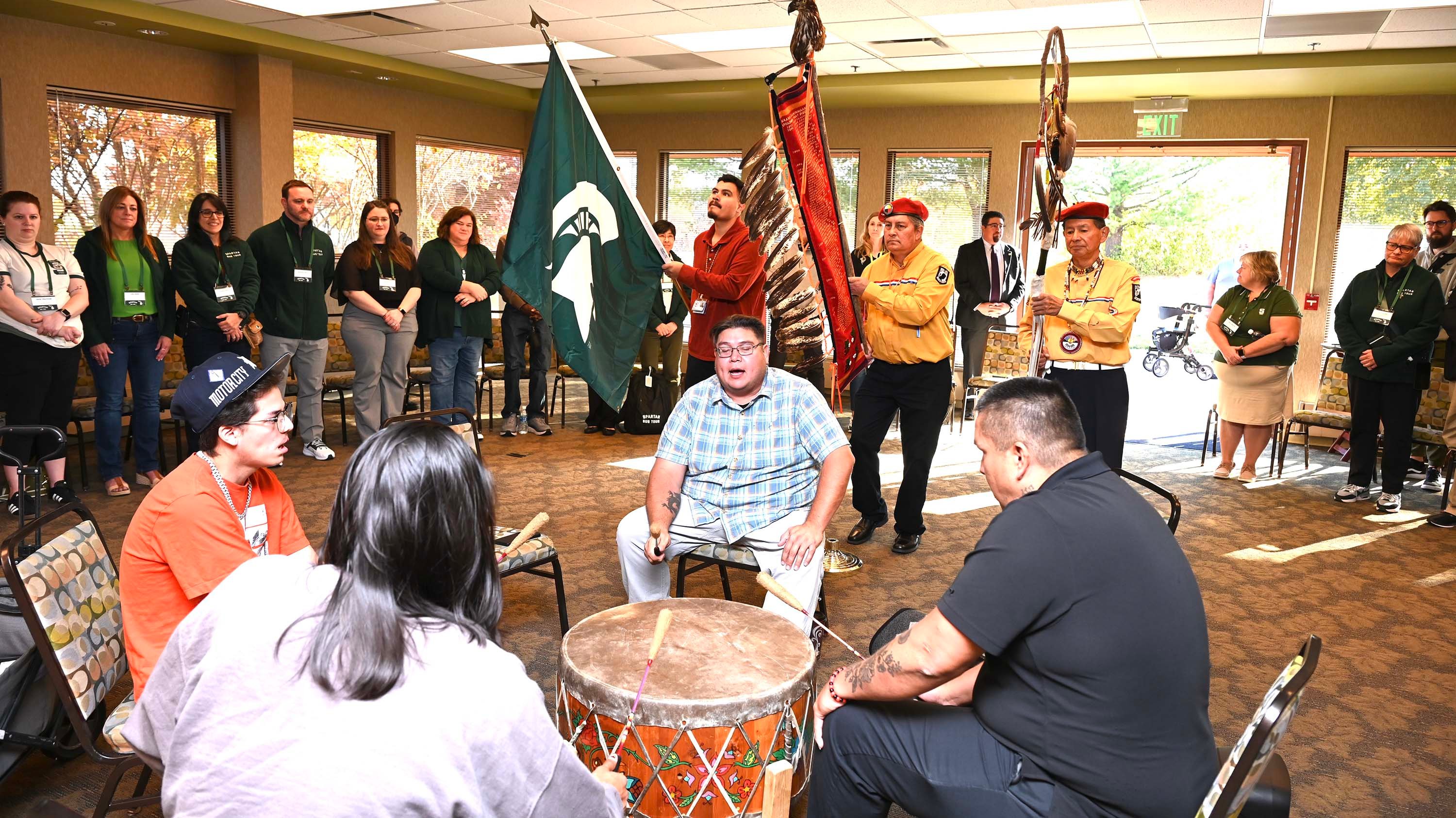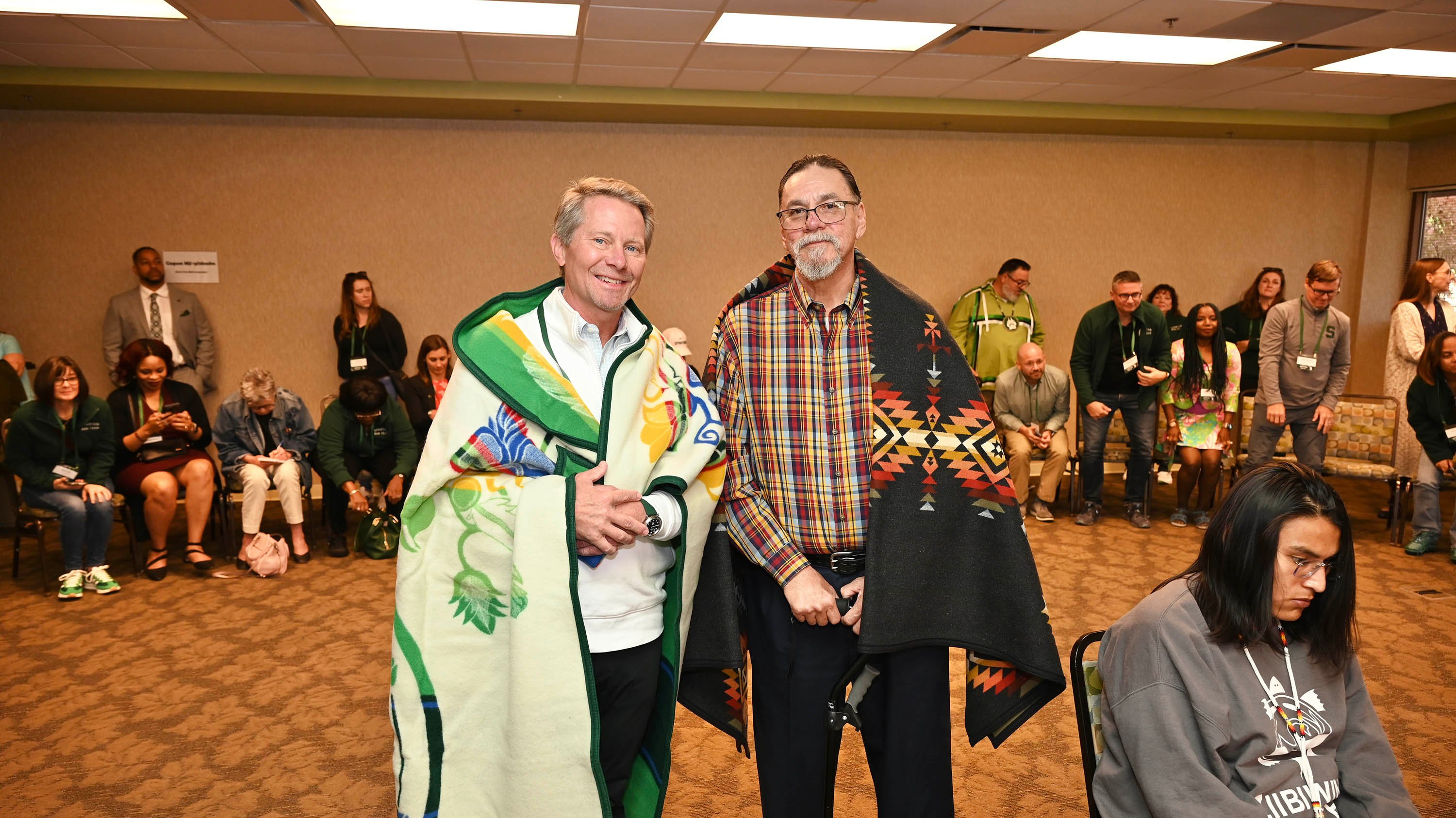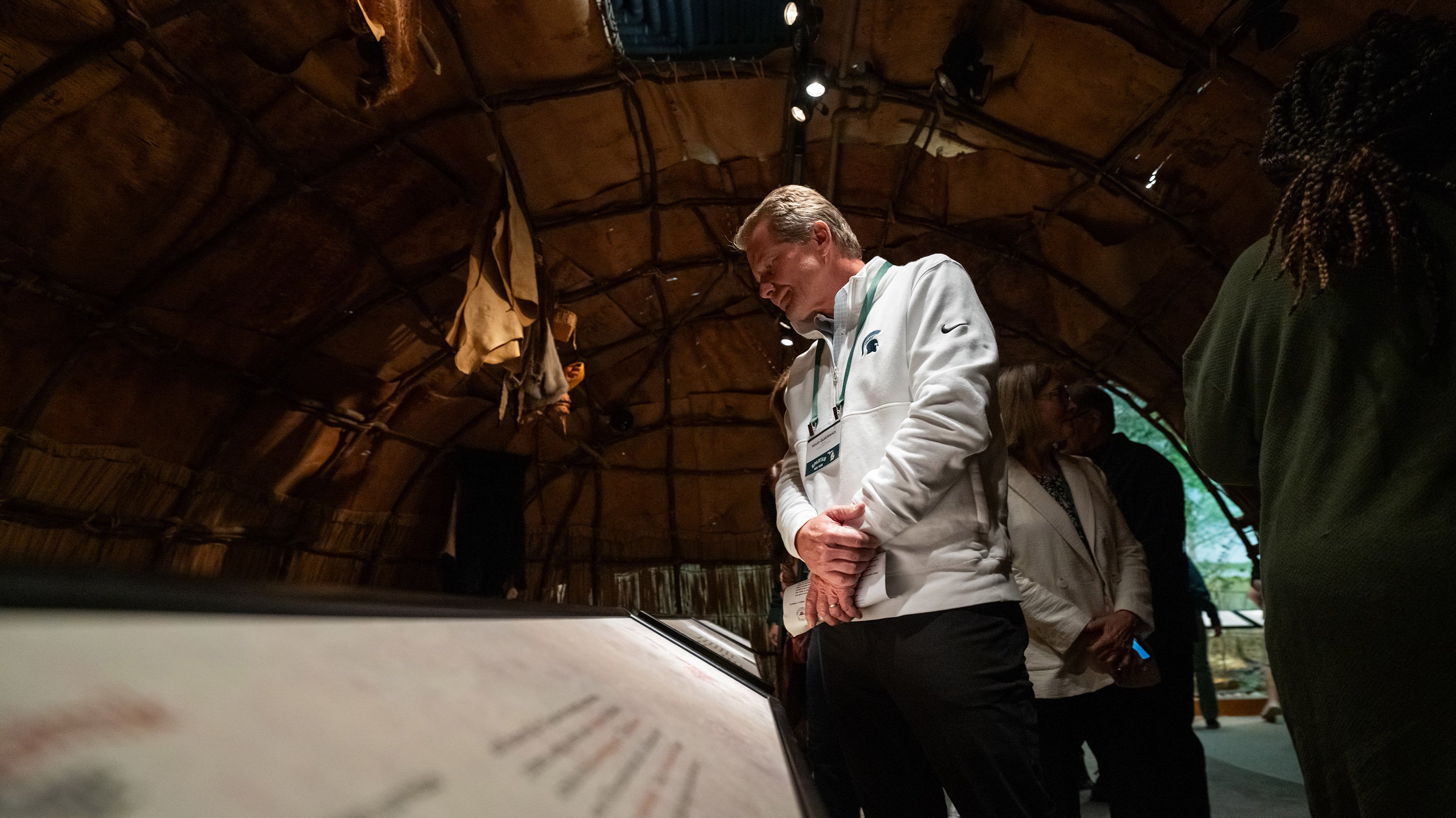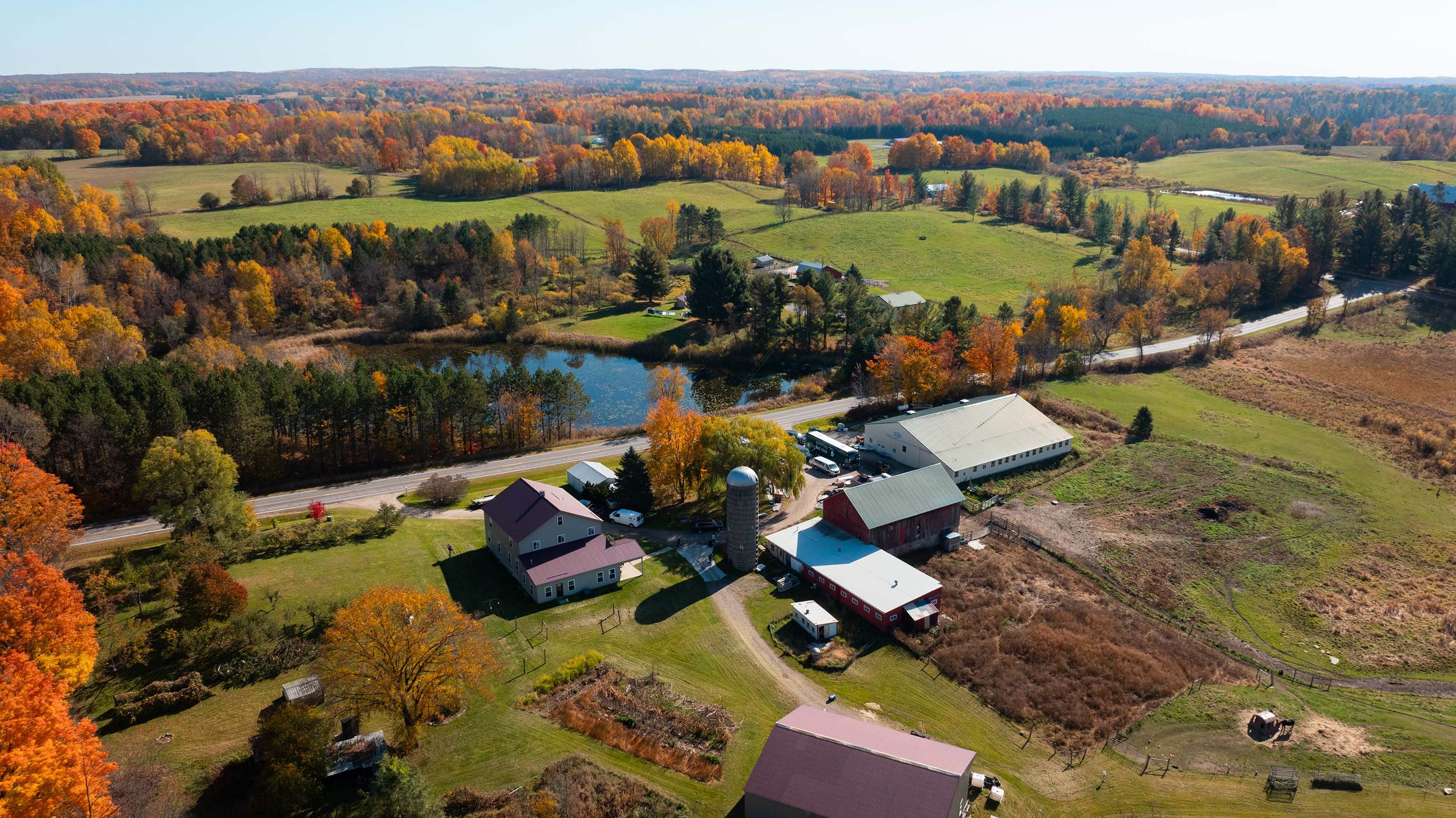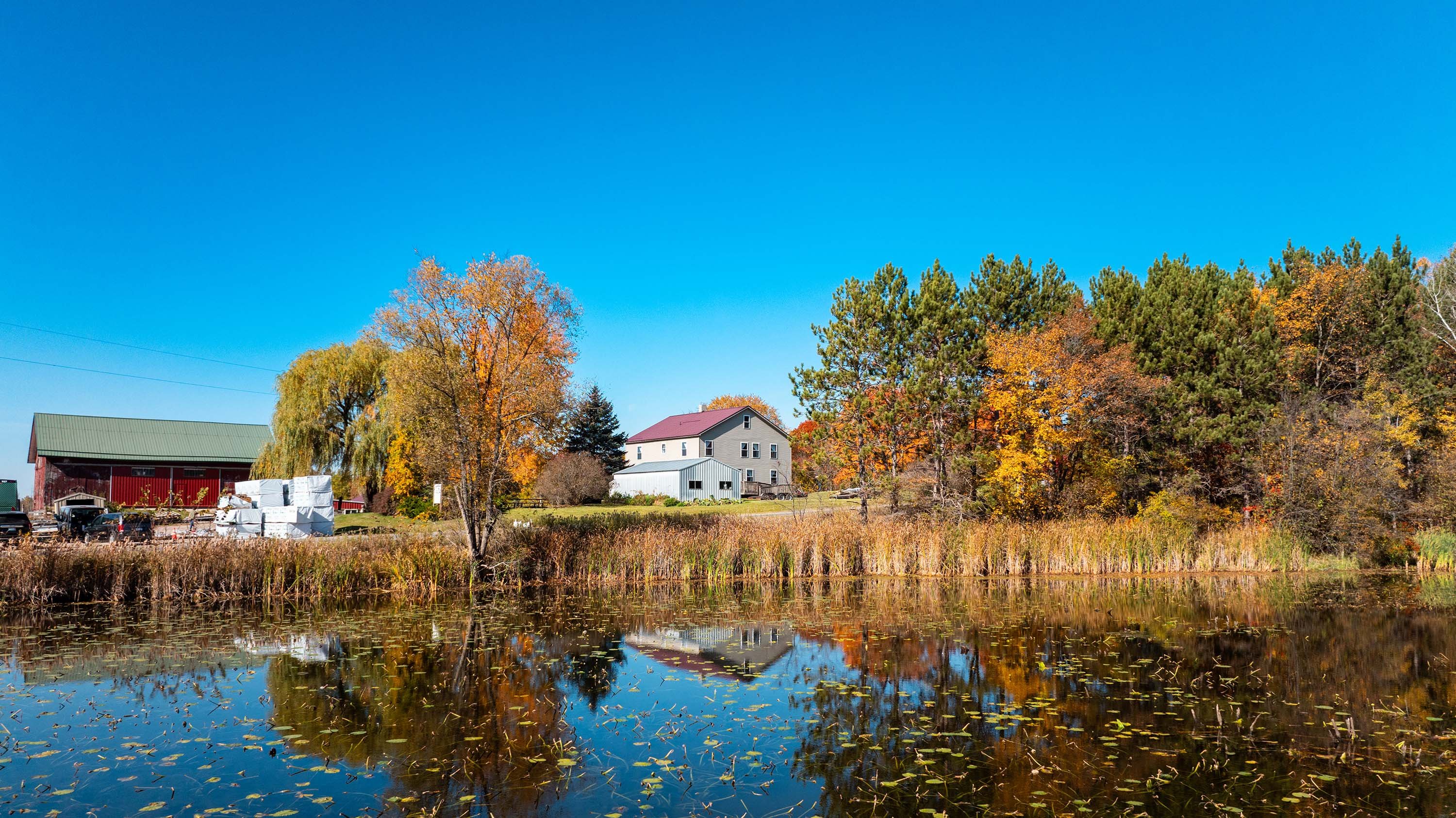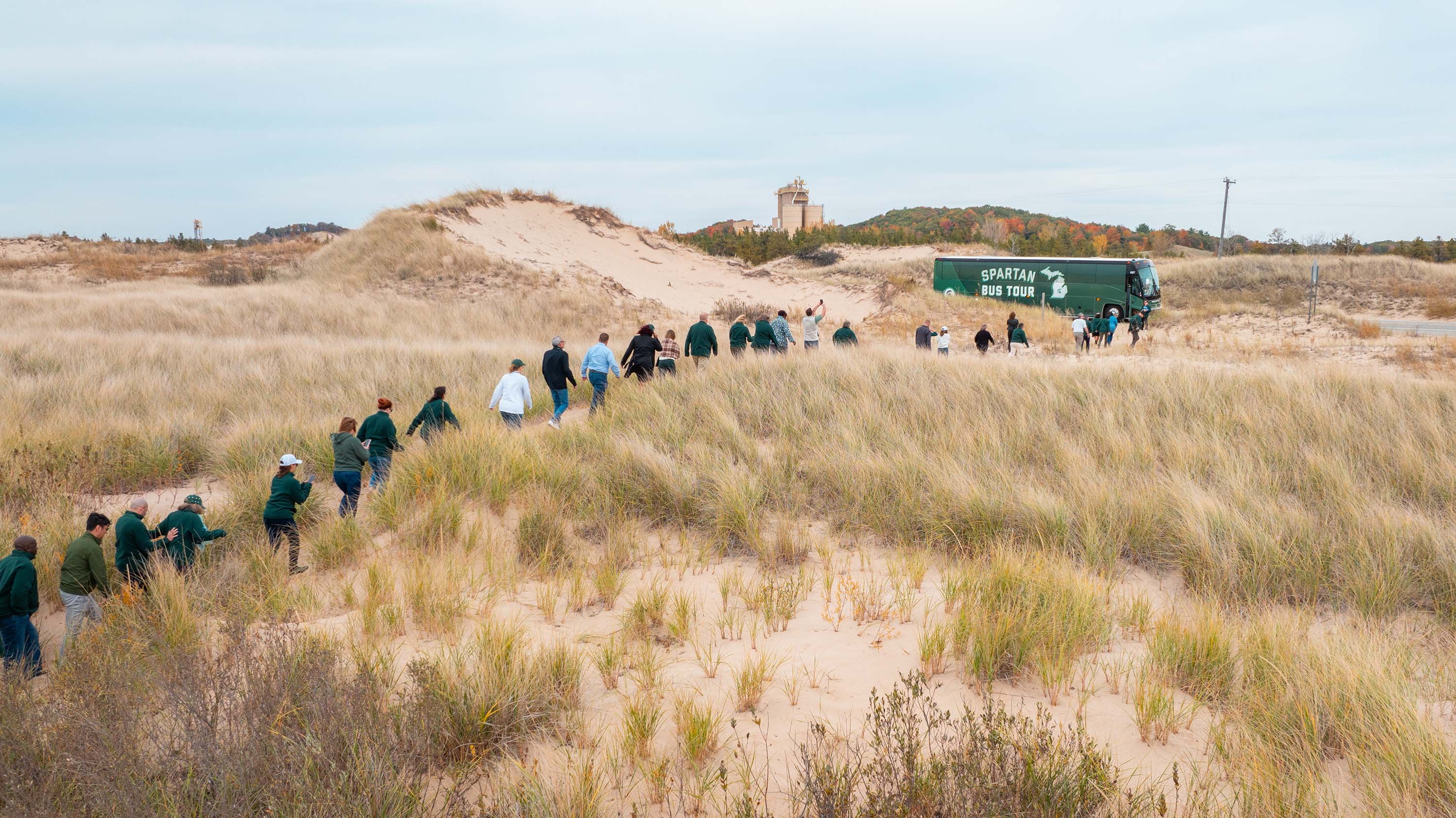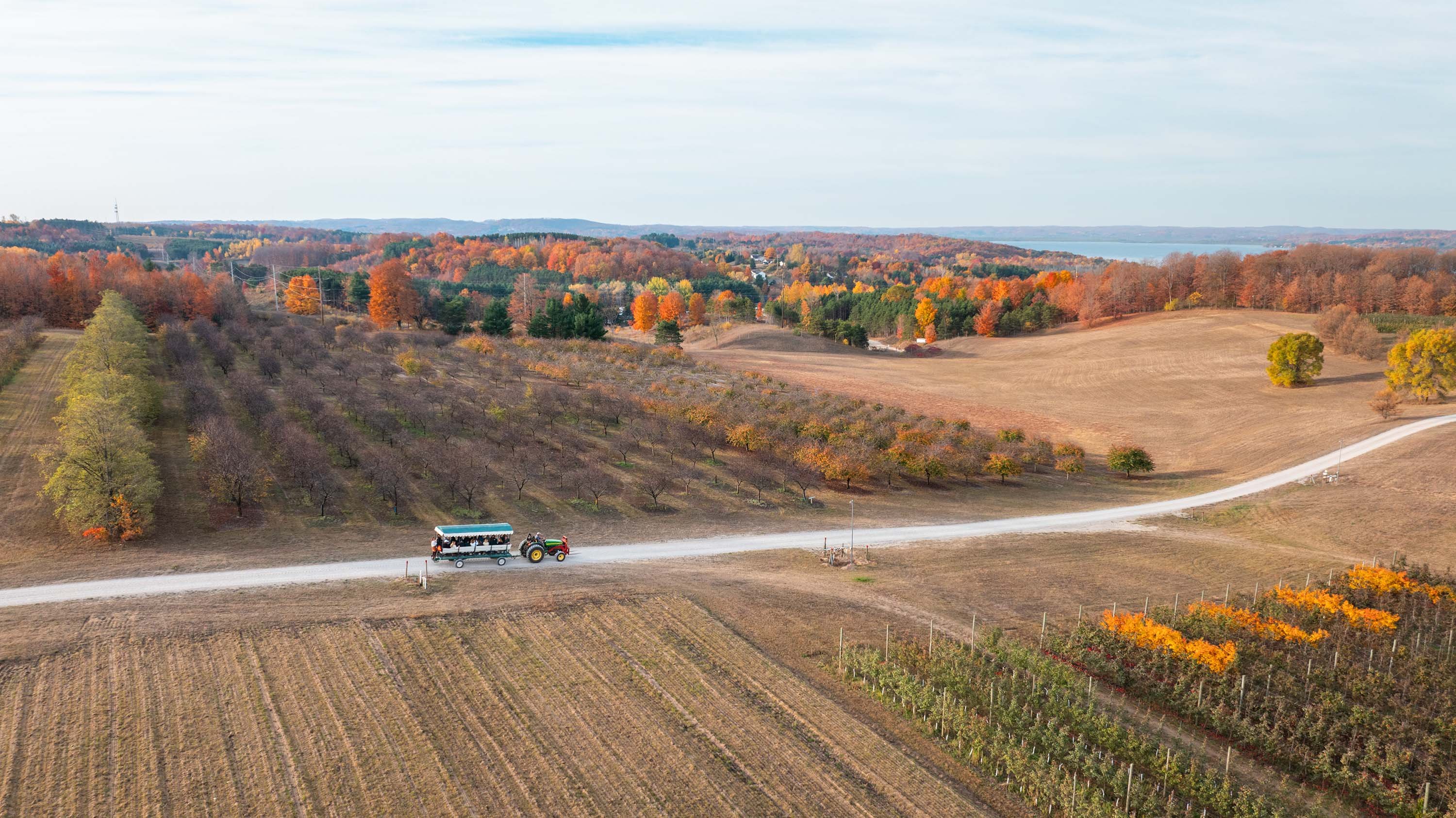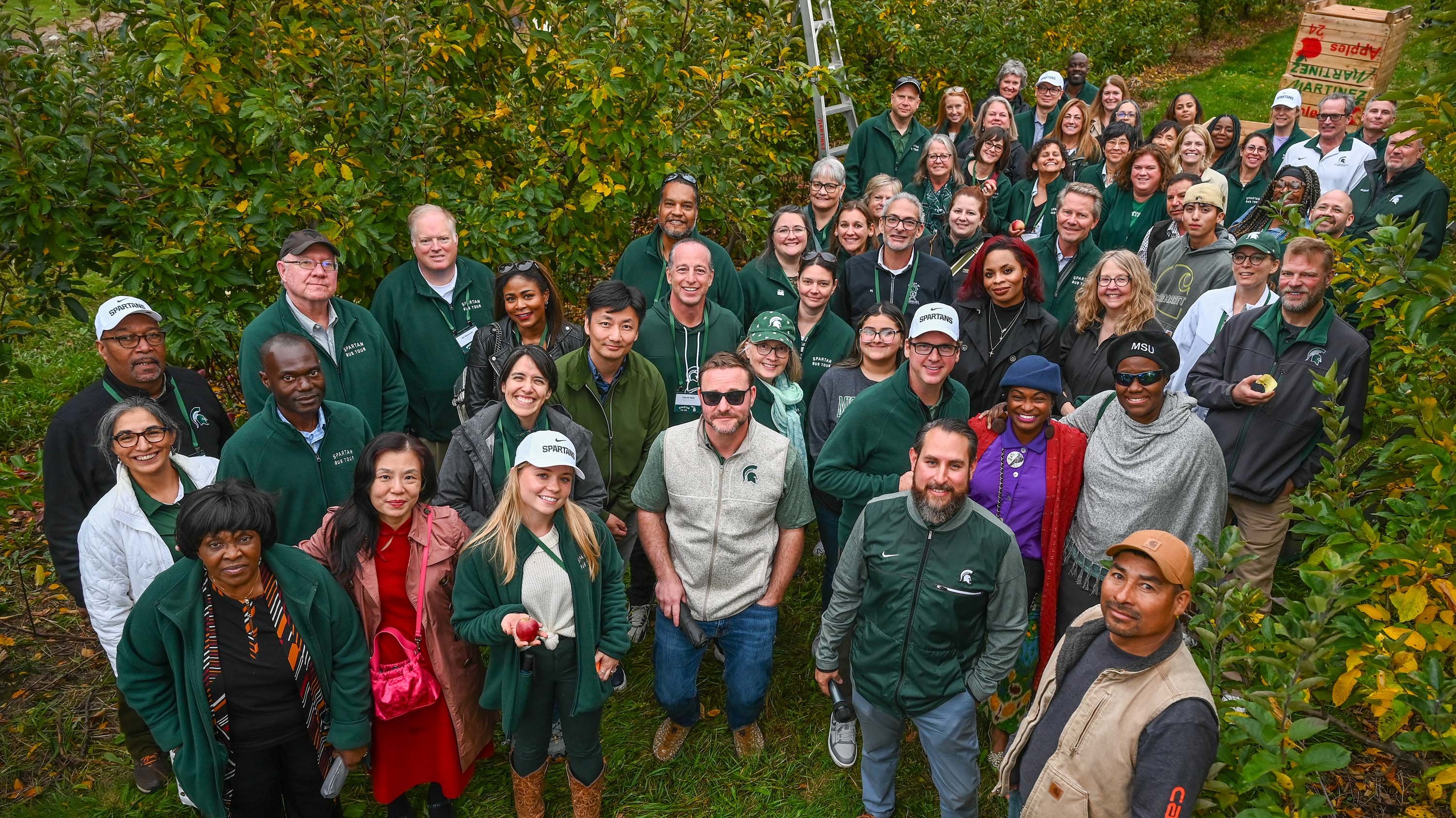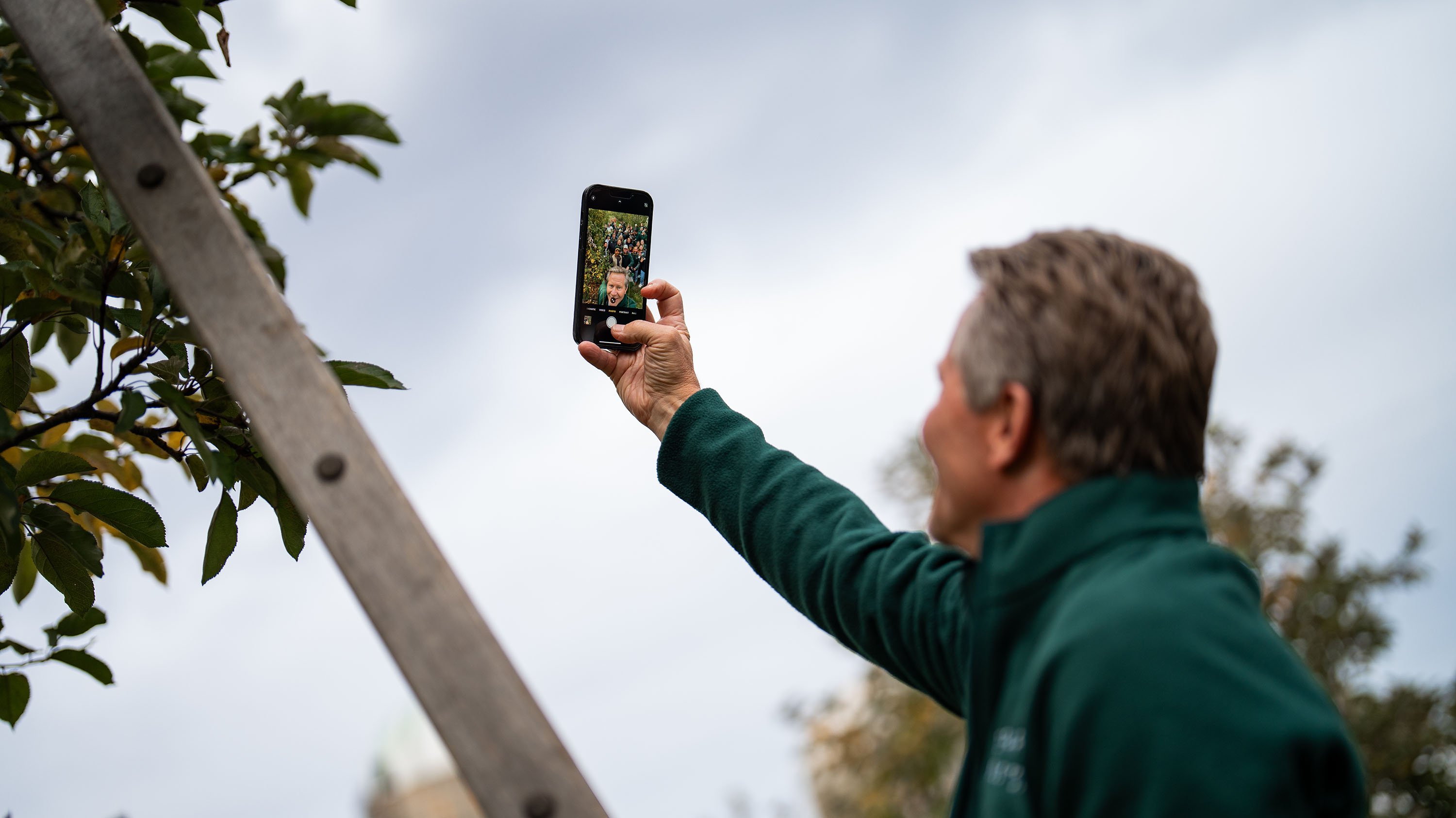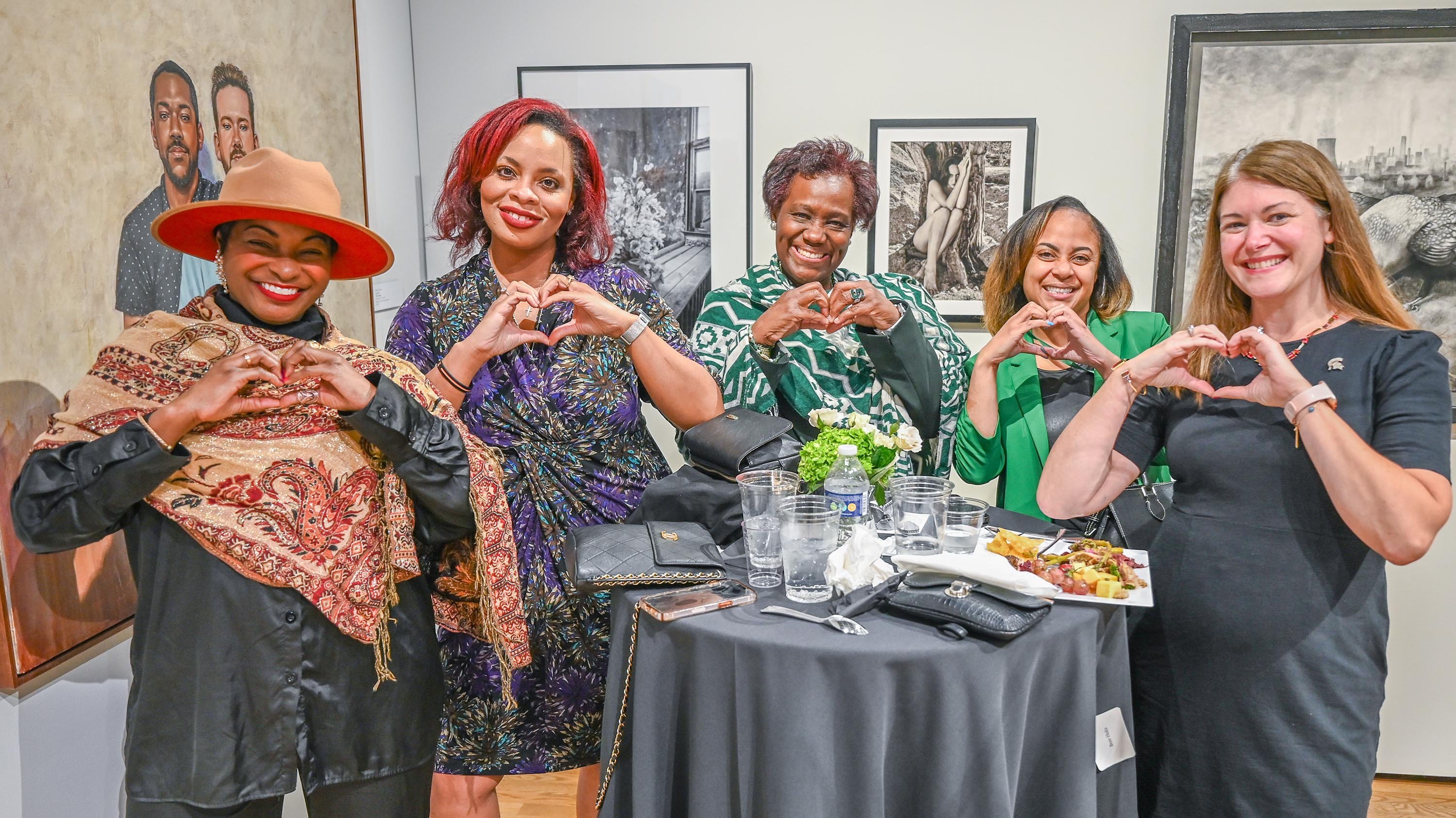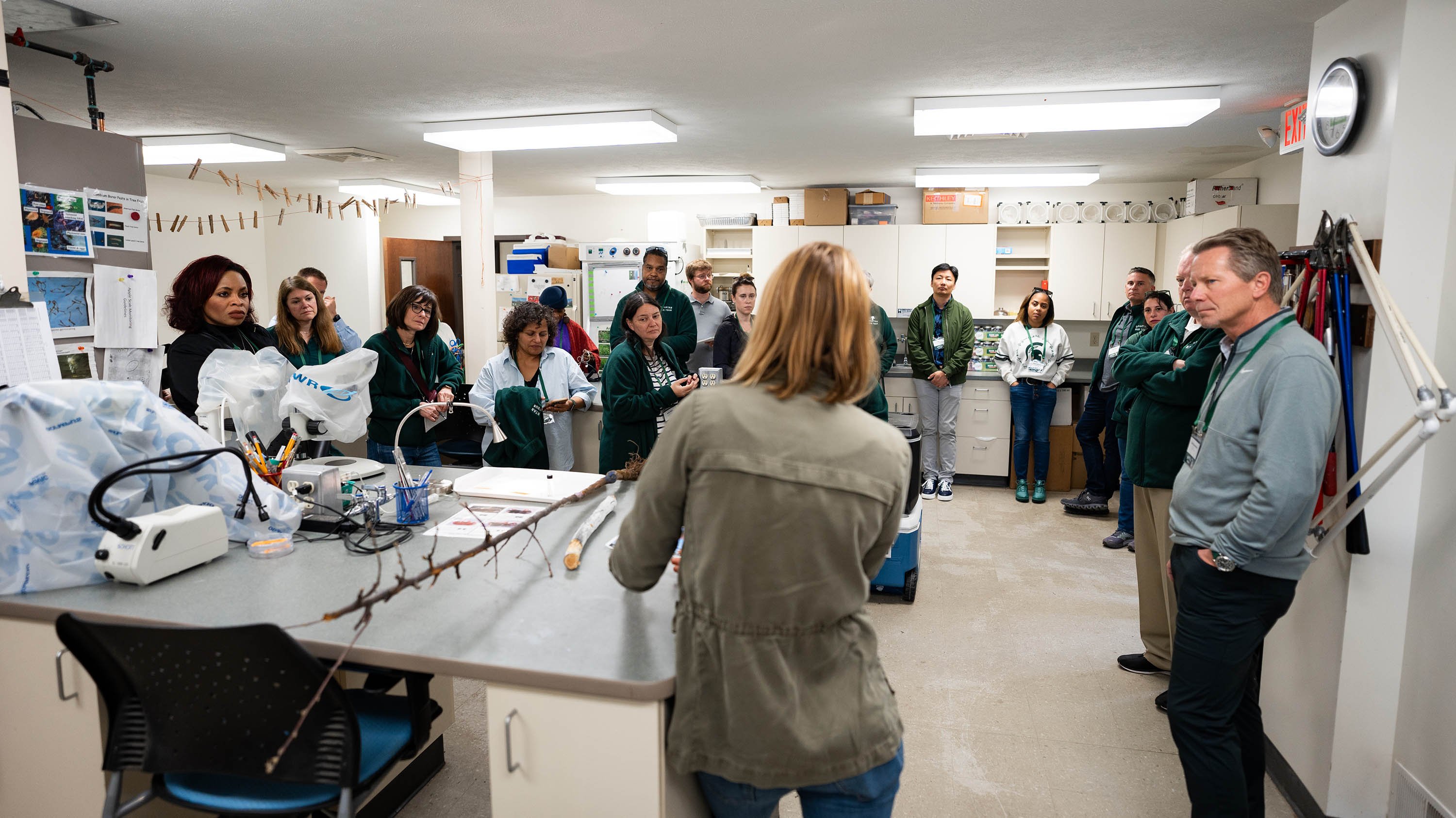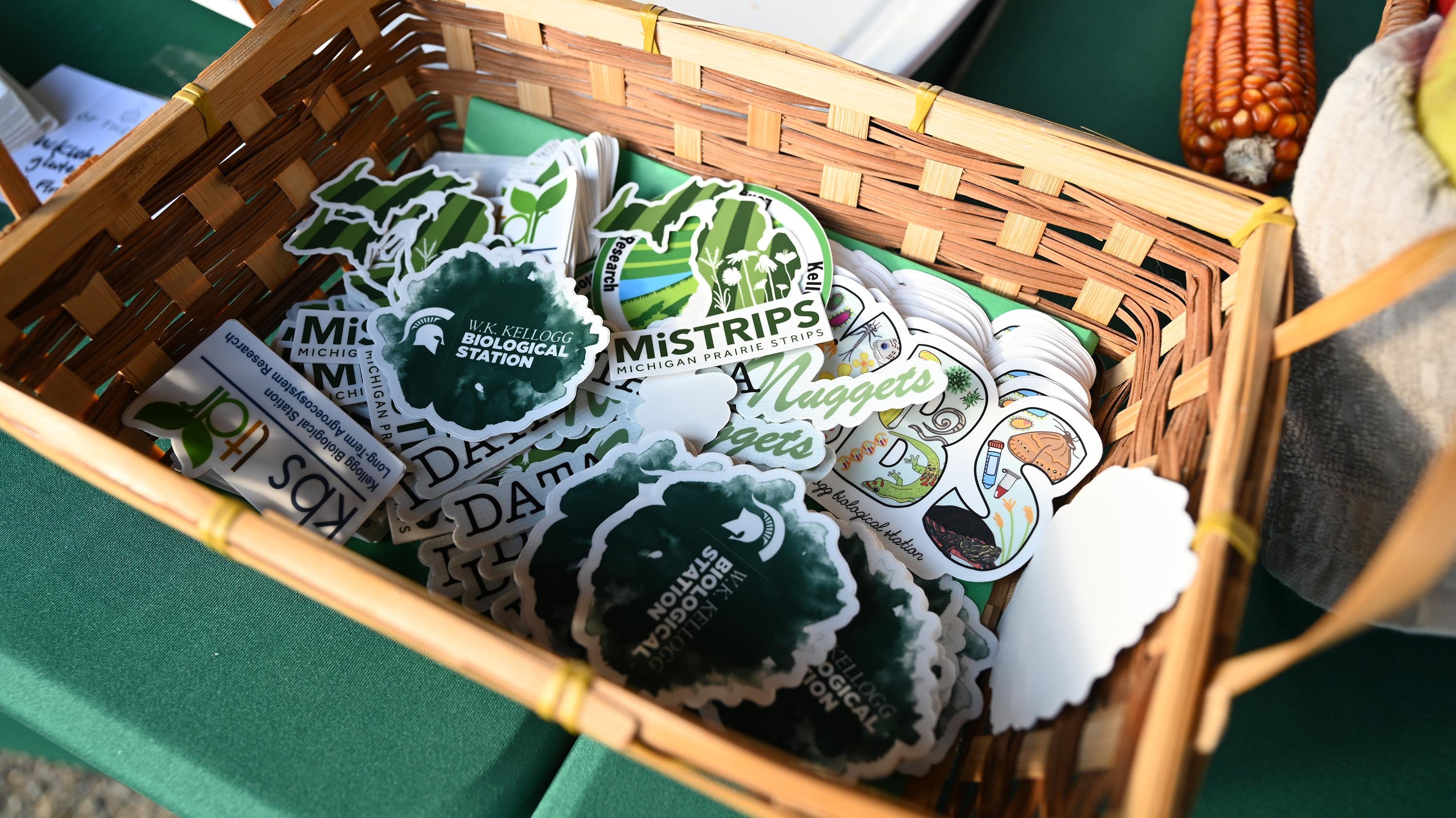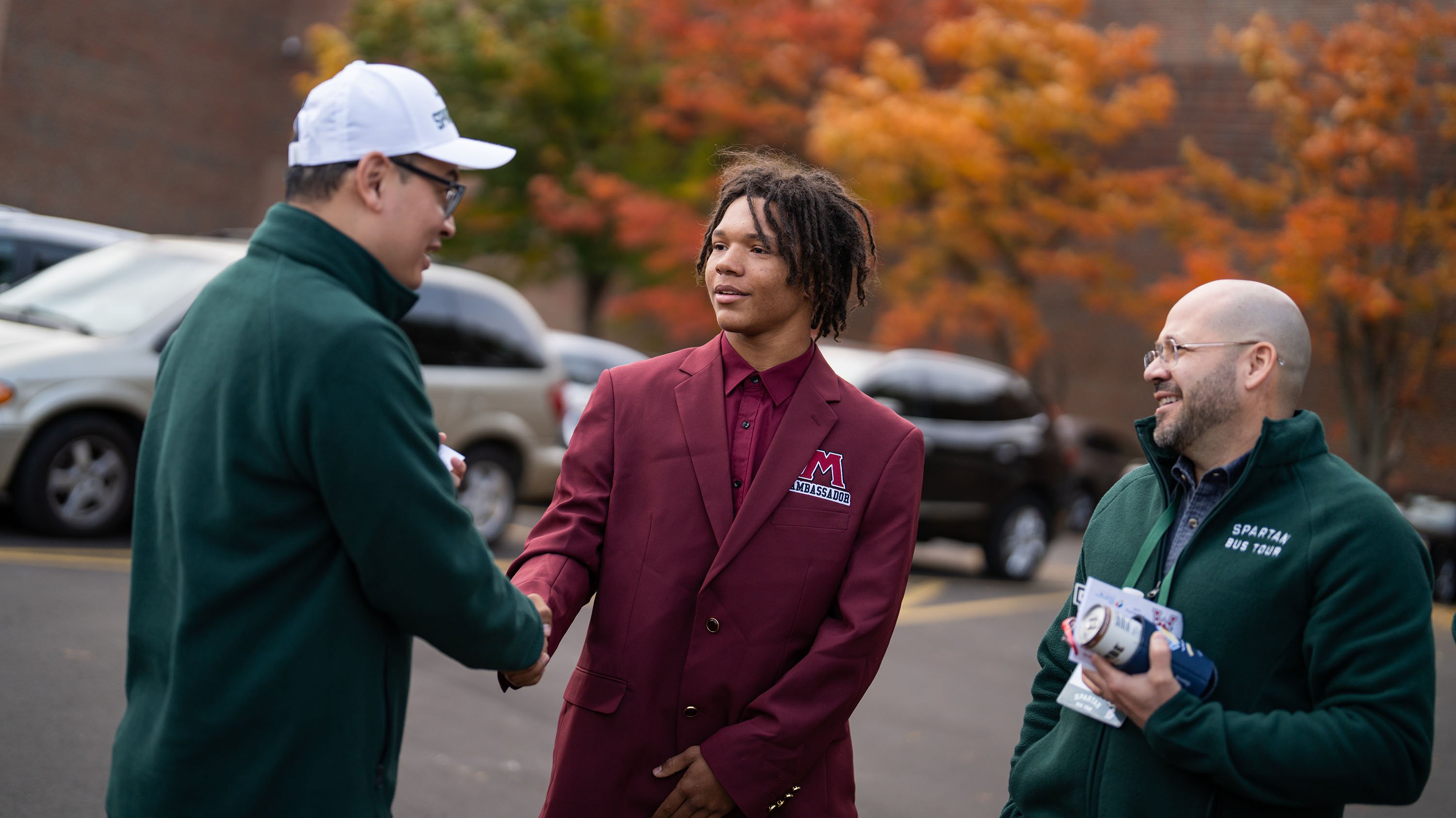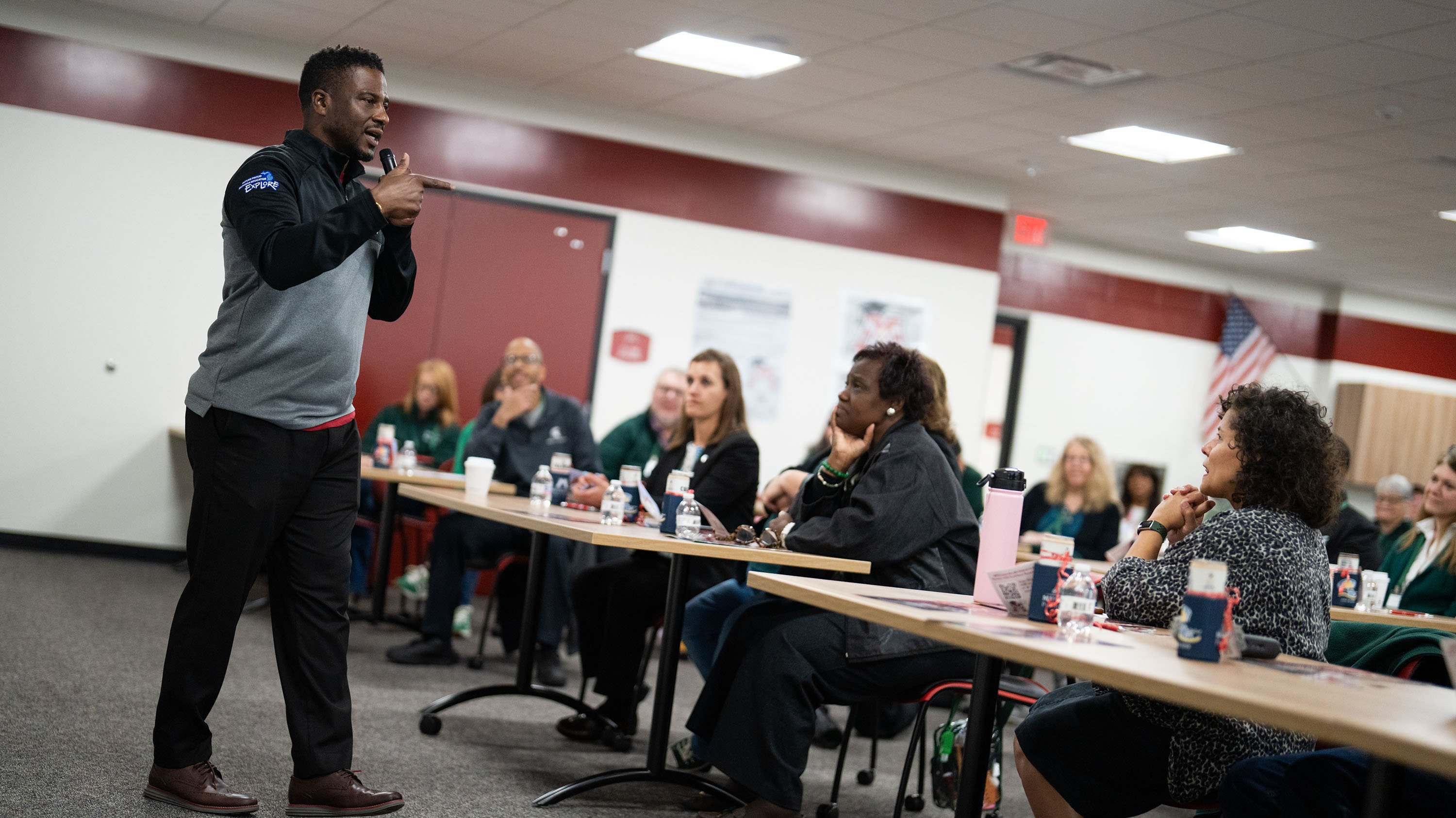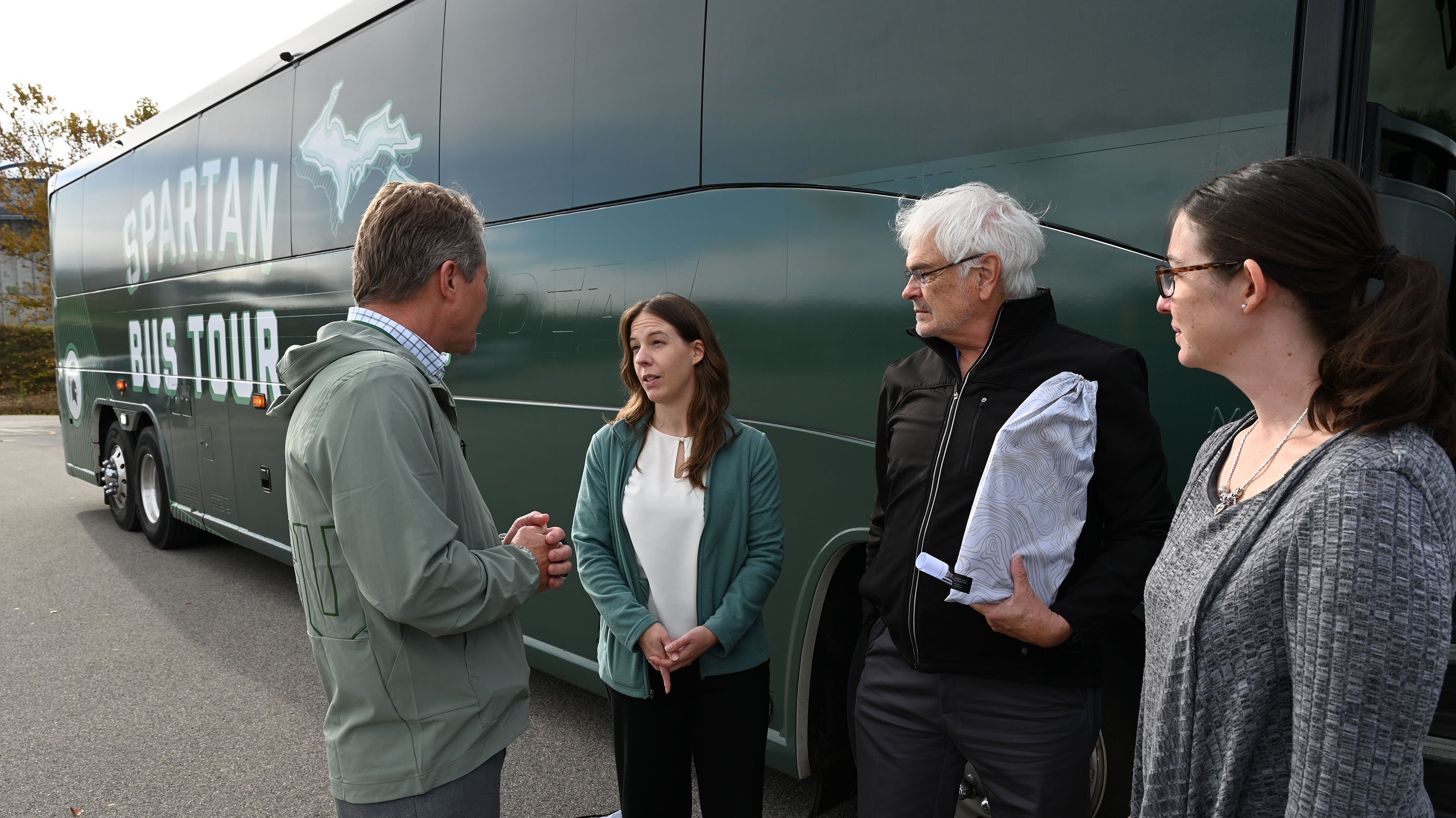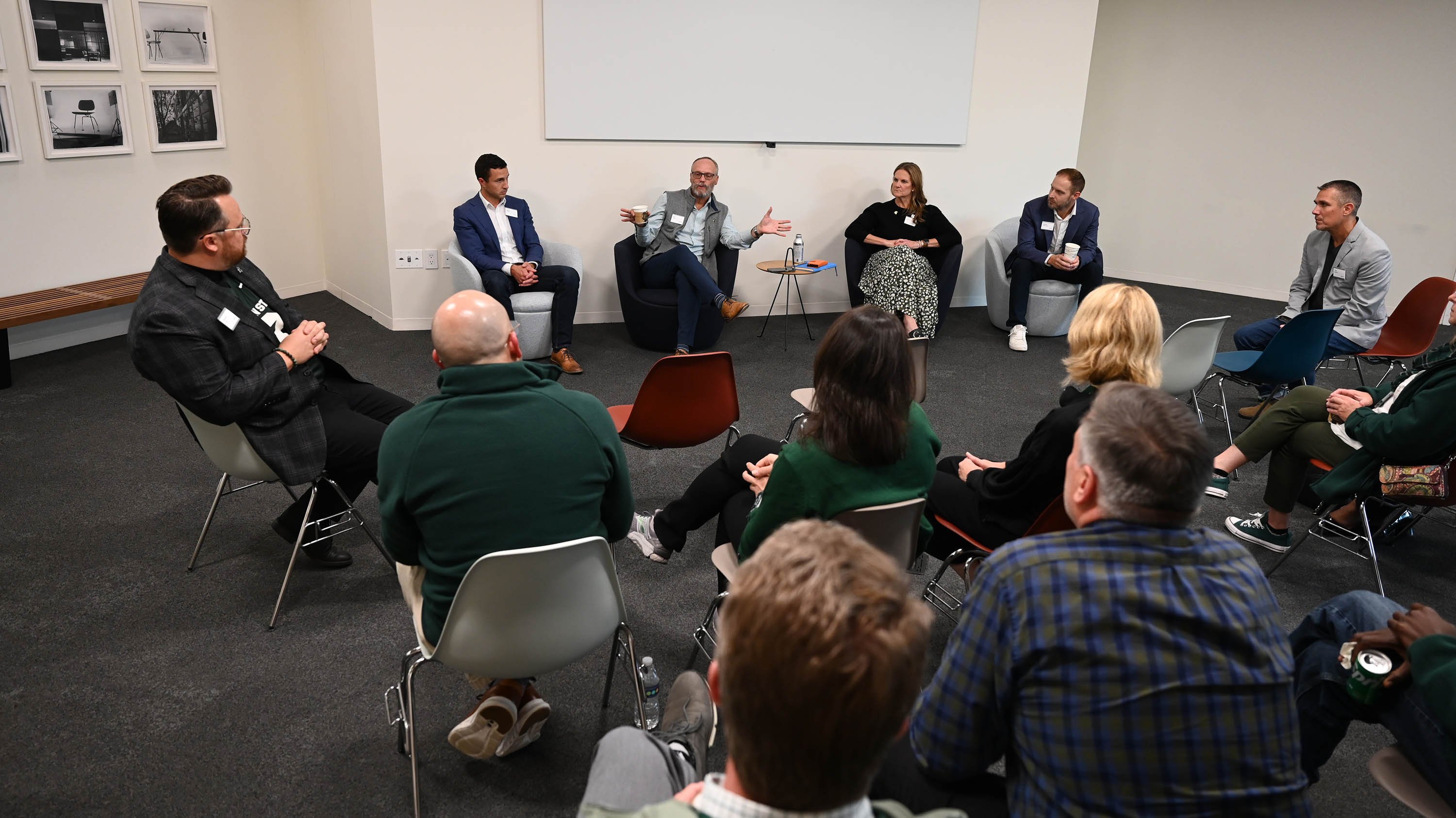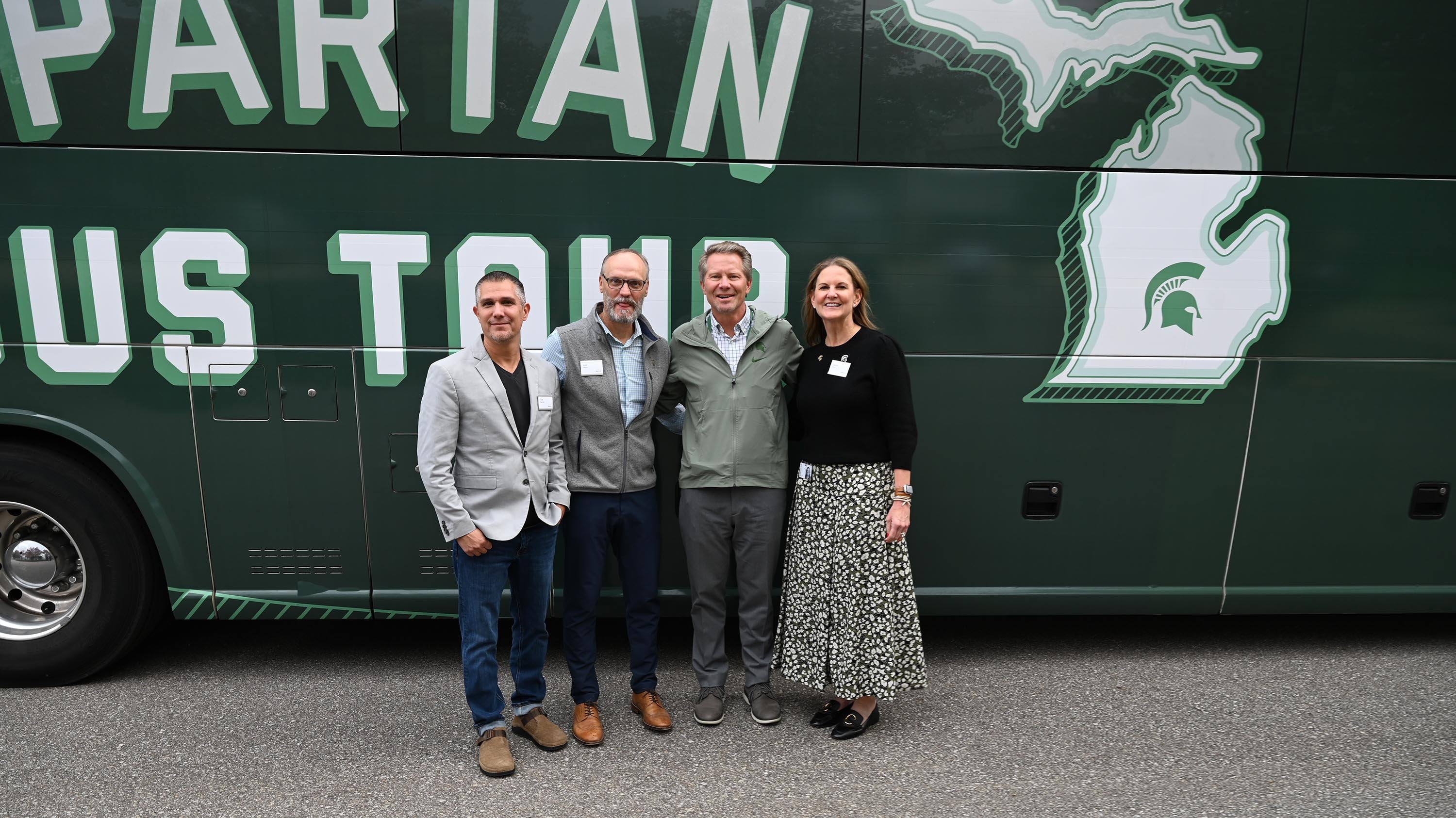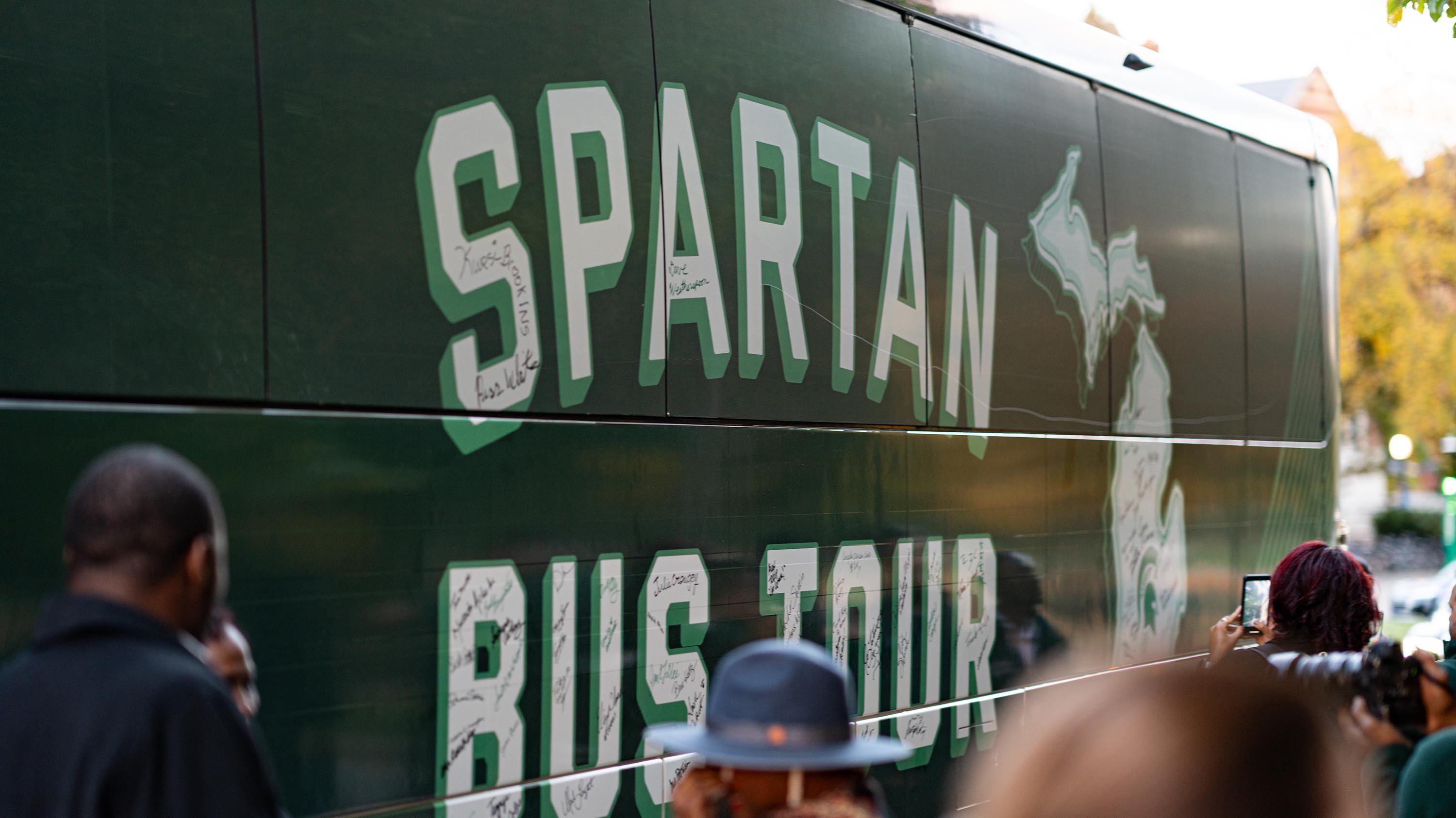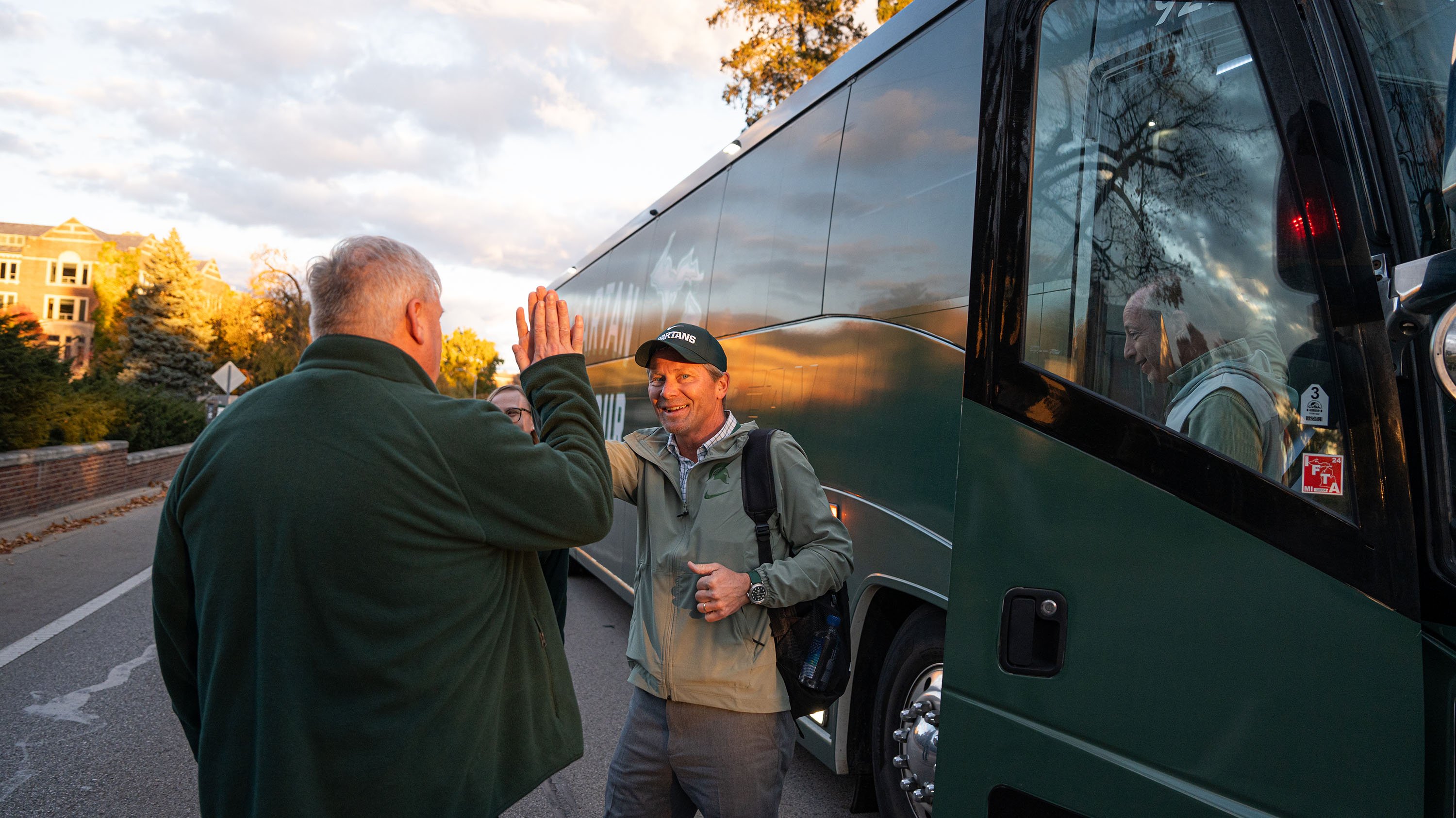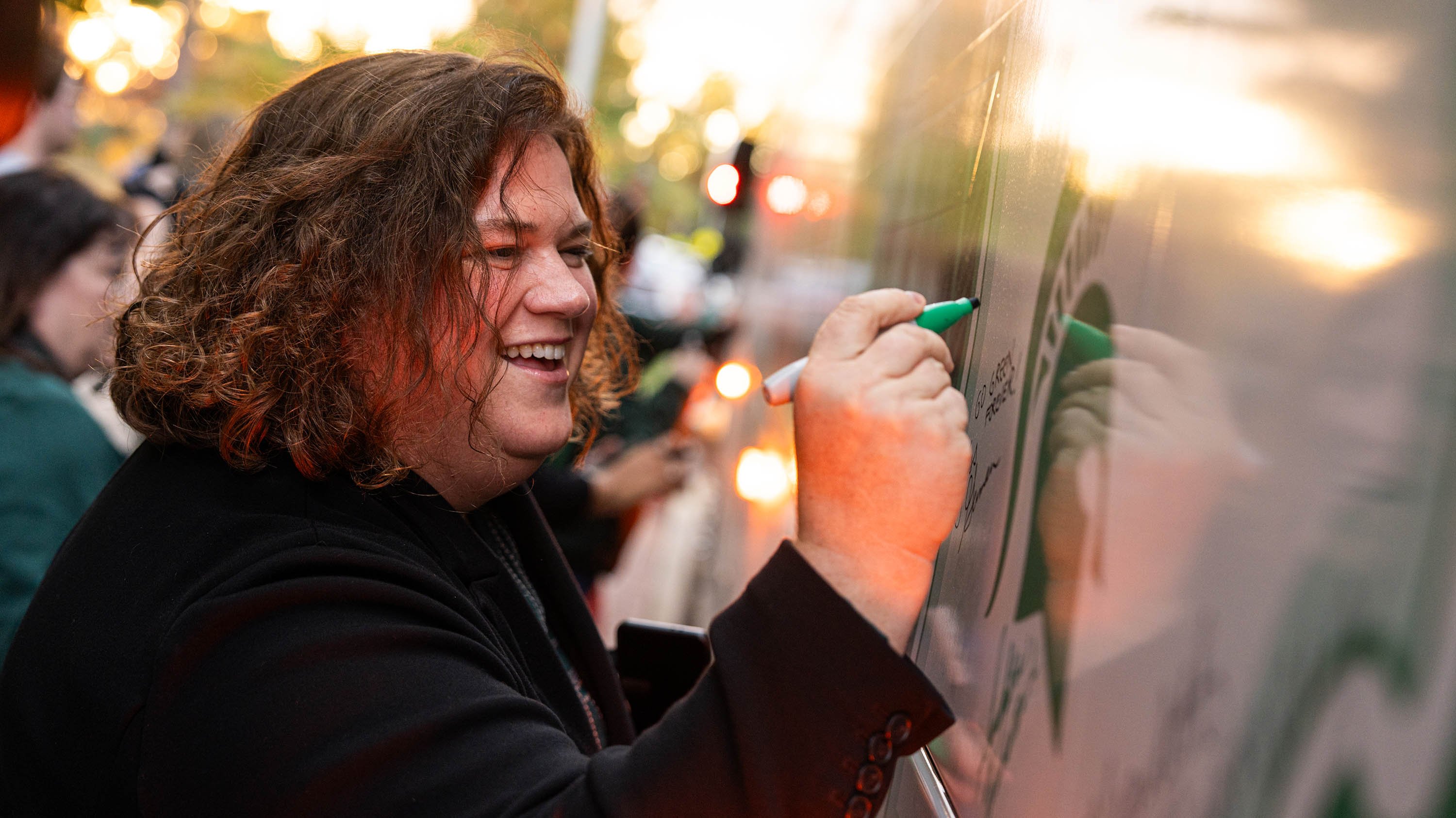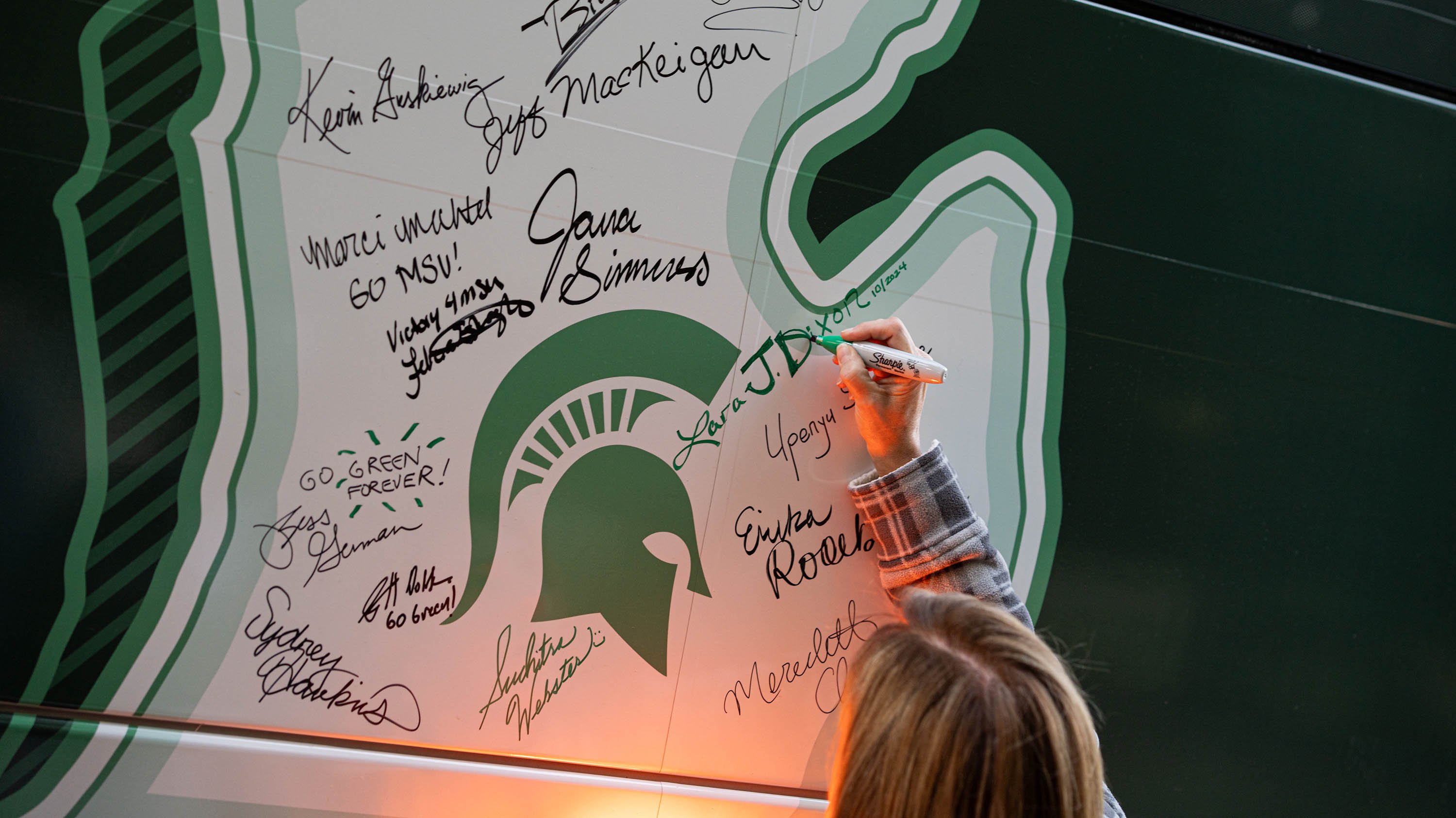One bus. Three days. 15 stops. 13 Michigan cities. 734 miles. Michigan State University’s inaugural Spartan Bus Tour introduced more than 60 administrators and faculty members to many of the places its students, staff and alumni call home.
The tour, launched on the heels of the investiture of President Kevin M. Guskiewicz, Ph.D., represents one of his first priorities as a new Michigander and Spartan.
“We visited some of the diverse communities that are integral to the fabric of our state and to MSU,” he said. “These places are where MSU’s impact is felt through our research, education, outreach and extension — and my hope is that we take what we’ve learned over the last course of the tour and consider how we can bring each of our unique backgrounds and skill sets to create new partnerships with the communities we visit and with each other. I hope that we can both appreciate what is and imagine what could be.”
The bus, wrapped in green and white, departed from East Lansing at 8:15 a.m. on Monday, Oct. 21, and returned on the evening of Wednesday, Oct. 23. During the 15-stop tour, participants met with partners and community members across the state while also creating new connections with colleagues along the way.
“This has truly been a life-changing experience for me,” said Raven Jones, an associate professor in MSU’s College of Education. “Seeing and hugging so many Spartans across our state was awe-inspiring. We are everywhere! At every site, the welcoming Spartan spirit was apparent and contagious. I am also renewed by the energy and brilliance of my esteemed colleagues. We held space for one another, celebrated each other as we engaged in storytelling practices and learned about the intersectionality of our research and work.”
Jump to: Day 1 | Day 2 | Day 3 | Back on the banks of the Red Cedar
Day 1: Culture and community
The first stop on the bus tour was a historic one. At the Ziibiwing Center of Anishinabe Culture and Lifeways in Mt. Pleasant, Guskiewicz became the first MSU president to meet with a tribal chief of the Saginaw Chippewa Indian Tribe on Anishinabe land to offer a living land acknowledgement. He read the following aloud to members of the tribe:
“We collectively acknowledge that Michigan State University occupies the ancestral, traditional and contemporary Lands of the Anishinabeg – Three Fires Confederacy of Ojibwe, Odawa and Potawatomi peoples. In particular, the university resides on land ceded in the 1819 Treaty of Saginaw. We recognize, support and advocate for the sovereignty of Michigan’s 12 federally recognized Indian nations, for historic Indigenous communities in Michigan, for Indigenous individuals and communities who live here now, and for those who were forcibly removed from their homelands. By offering this land acknowledgement, we affirm Indigenous sovereignty and will work to hold Michigan State University more accountable to the needs of American Indian and Indigenous peoples.”
Participants heard from staff, tribe members and MSU faculty who are currently partnering with the center; toured exhibits; experienced a traditional music performance by the Onion Creek Singers; took part in a flag ceremony and blessing; and witnessed Saginaw Chippewa Indian Tribe Chief Tim Davis and Guskiewicz participate in a blanketing ceremony, a symbol of respect, support and warmth from the Anishinabe people.
“When you see an organization as large as MSU take the time to make a stop here and learn about the Indigenous populations, it means so much,” said Erik Rodriguez, director of public relations at the Ziibiwing Center. “Continuing to find ways to expand our partnership and strengthen the bond between a nation and a university is very important for not only our community, but for all people throughout mid-Michigan.”
Paola Smith, assistant director of the MSU Community Music School-Detroit, has already started conversations with the Onion Creek Singers to see how she can incorporate their music into her curriculum.
“I was so moved by the presentation and the music at the Ziibiwing Center,” said Smith. “It is important to me that MSU is engaging with Indigenous people in Michigan, and I look forward to figuring out how to do more of that in my work in Detroit.”
The bus then made its way to M&R Pickling, an Amish family-owned canning company in Le Roy, which won the MSU Product Center’s Value-Added Agriculture Award in 2024, before heading to Camp Grayling — the largest U.S. National Guard training facility in the United States.
Matt Kleitch, an alum of the MSU College of Agriculture and Natural Resources, is Camp Grayling’s environmental manager. He explained how he partners with MSU to “keep common species common.”
“I think it is a surprise to most people that conservation is such a focus for us,” said Kleitch, who discussed working with many groups who come to the site to conduct research. “We operate on more than 147,000 acres and recognize that there are a lot of valuable natural resources on this land, as well as endangered species. We’re tenants and users, but also stewards of the land, and we recognize that we have a responsibility to take that very seriously.”
Col. Lucas Lanczy, Camp Grayling commander, and Capt. Daniel Childs, assistant professor in the MSU Department of Military Science and lieutenant with MSU’s Department of Police and Public Safety, also addressed the group. In addition to giving a tour of the grounds, they presented about the site’s 111-year history, the annual $20 million in local economic impact that camp activities bring in, and connection to the university’s Department of Military Science, which is notable given the fact that MSU’s ROTC program ranks 11th out of 270 programs nationally.
“I really enjoyed the visit to Camp Grayling,” said Sarah Machniak, coordinator of Student Enrichment and Community Outreach in the College of Veterinary Medicine. “The National Guard, and the military in general, is not something I am familiar with, so I appreciated the conversation about how we can best support these students who are both going to school and serving.”
The final stop of the day brought the bus to MSU’s Camp Wa Wa Sum, a 144-year-old classic log cabin conference and research center located on the AuSable River, also in Grayling. Primarily used by groups like Trout Unlimited and the Michigan departments of Fisheries and Wildlife and Forestry, the camp also regularly welcomes research teams from MSU and several other Big Ten universities.
“This small slice of paradise in Northern Michigan is an absolute gem,” said Kevin Gardiner, a fifth-generation caretaker of the camp, as he led participants on a tour of the property. “It is, has always been and will always be my absolute honor to welcome people to this special place on behalf of MSU and our region.”

